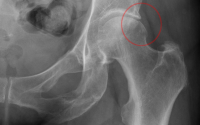Torn ACLs Could Heal with Rehabilitation
Anterior cruciate ligament (ACL) ruptures are commonly treated with ACL reconstruction (ACLR), and the frequency of this surgery is on the rise. Despite the surgical advancements, replicating the complex structure and functionality of the native ACL, including its proprioceptive fibers and synchronized bundle movements, remains a challenge. An alternative to surgery is exercise-based rehabilitation, which focuses on enhancing the functional stability of an ACL-deficient knee.
Despite the choice of treatment, many individuals with ACL injuries suffer from poor long-term outcomes, such as knee instability, limitations in activities and sports, additional meniscal injuries, persistent pain, early knee osteoarthritis, and reduced quality of life.
There’s a potential for spontaneous healing of the ACL through non-surgical means. The Knee Anterior Cruciate Ligament Nonsurgical vs Surgical Treatment (KANON) trial, the first RCT of its kind, compares outcomes between early ACLR followed by rehabilitation and exercise-based rehabilitation.
A new study from Department of Physiotherapy, The University of Melbourne reanalysed the data from 120 patients, analyzing MRI scans of individuals who underwent surgical treatment compared to those who received only rehabilitation. The criteria for identifying healing included the observation of continuous ACL fibers—previously noted as completely disrupted in the rupture zone—along with the ligament appearing thicker, tauter, and more normal in structure.
The study was published in British Journal of Sports Medicine.
Results
The study analyzed evidence of ACL healing on MRI in participants who underwent rehabilitation with an option for delayed ACL reconstruction (ACLR). At the 2-year follow-up, 30% of these participants showed evidence of ACL healing on MRI. Notably, even among those who later opted for delayed ACLR, 3 out of 15 showed signs of healing before their surgery. For those managed with rehabilitation alone, 53% displayed ACL healing at 2 years, and this increased to 58% at the 5-year mark. These findings indicate a significant potential for ACL healing through non-surgical rehabilitation over time.
Two years after injury, participants ACL healing reported significantly better KOOS (Knee Injury and Osteoarthritis Outcome Score) outcomes than those without healing. By five years, these differences lessened. Those with healed ACLs largely met the Patient Acceptable Symptom State (PASS) criteria, ranging from 63% to 94%, a stark contrast to the 29%–61% in the non-healed or surgically reconstructed groups. At the five-year mark, the quality of life scores remained better for those with evidence of healing, although the differences across groups had lessened, suggesting some convergence in long-term outcomes.
Among 13 participants who showed evidence of ACL healing on MRI at 1 year, only three opted for delayed ACL reconstruction (ACLR) before the 5-year follow-up. This decision-making was not influenced by participants being aware of their ACL healing status, as they were not informed. It is speculated that better patient-reported outcomes in those with evidence of healing likely deterred them from undergoing delayed ACLR, whereas poorer outcomes in those without healing evidence might have pushed them towards surgery. Given that signs of healing were visible on MRI as early as three months post-injury, future research should explore if ACL healing status can guide initial treatment decisions, suggesting that the capacity for ACL healing should be considered more prominently in managing ACL injuries.
Conclusions
The findings from this study suggest a significant potential for spontaneous ACL healing, particularly in individuals managed with rehabilitation alone, without the need for delayed ACLR. This healing was associated with favorable outcomes, challenging the traditional belief that ACL ruptures require surgical intervention for successful recovery. The results advocate for a possible shift in treatment strategies, promoting a greater focus on rehabilitation and less immediate recourse to surgery, which may lead to better long-term outcomes and a reevaluation of current ACL management protocols.


